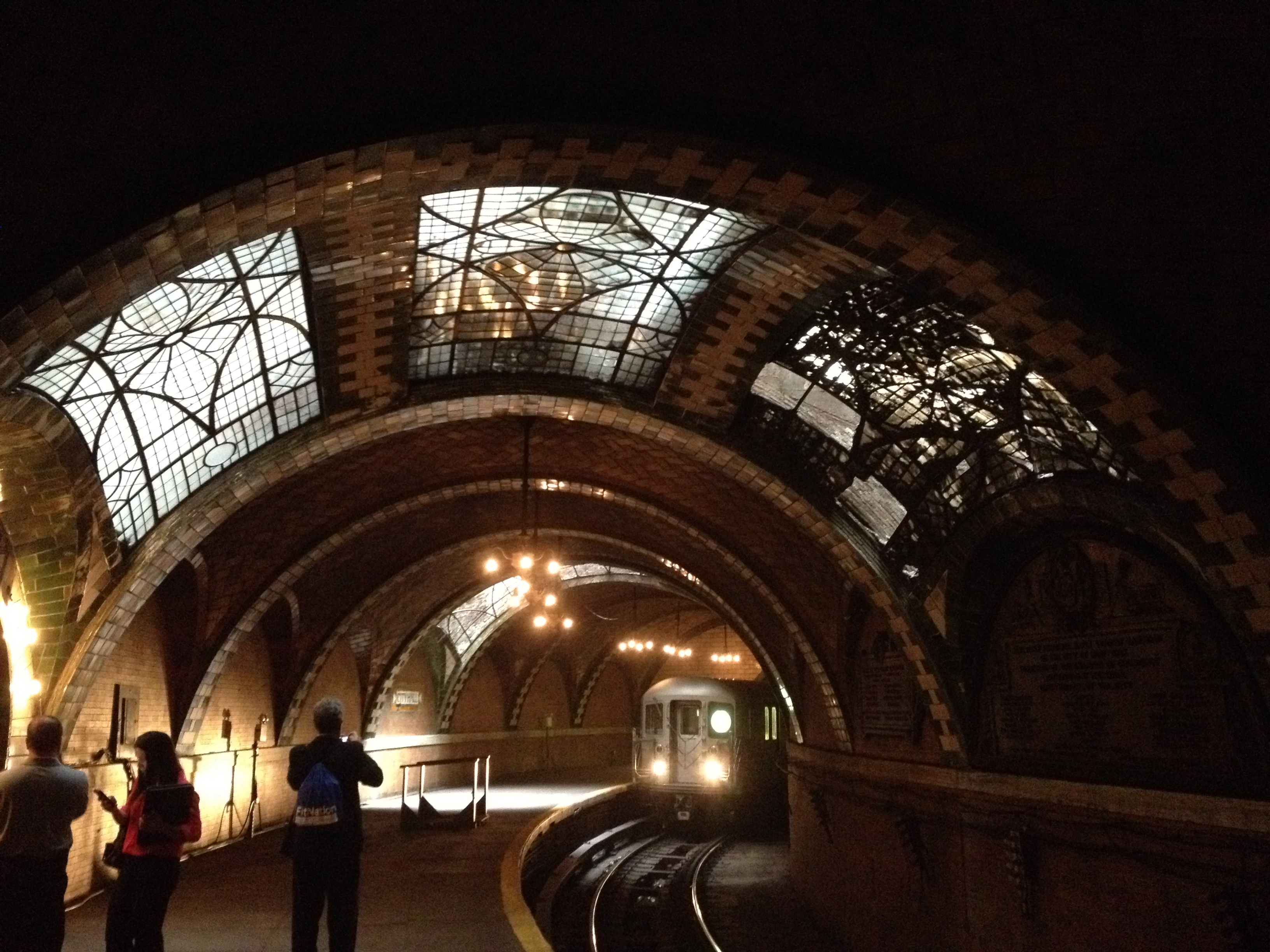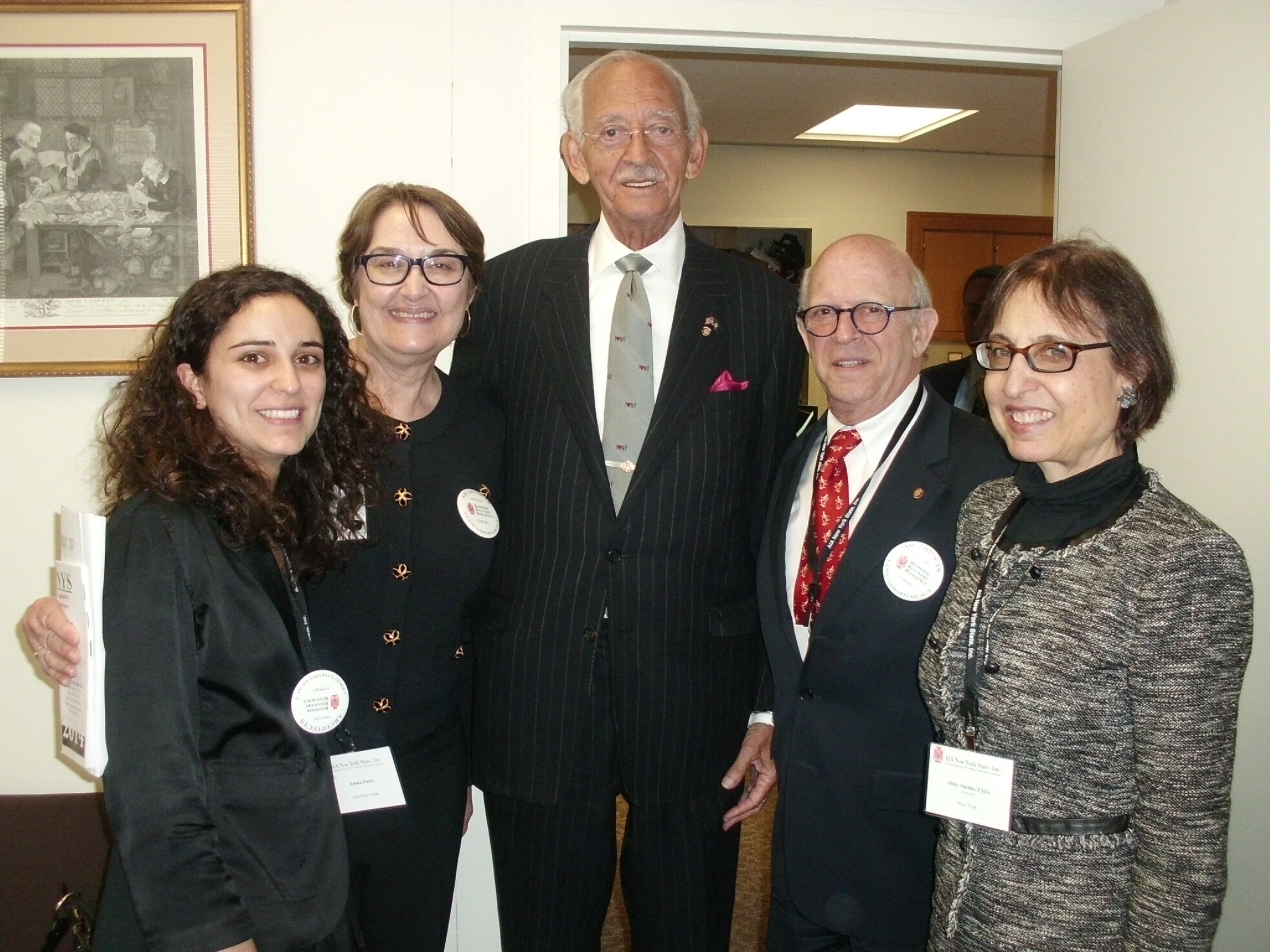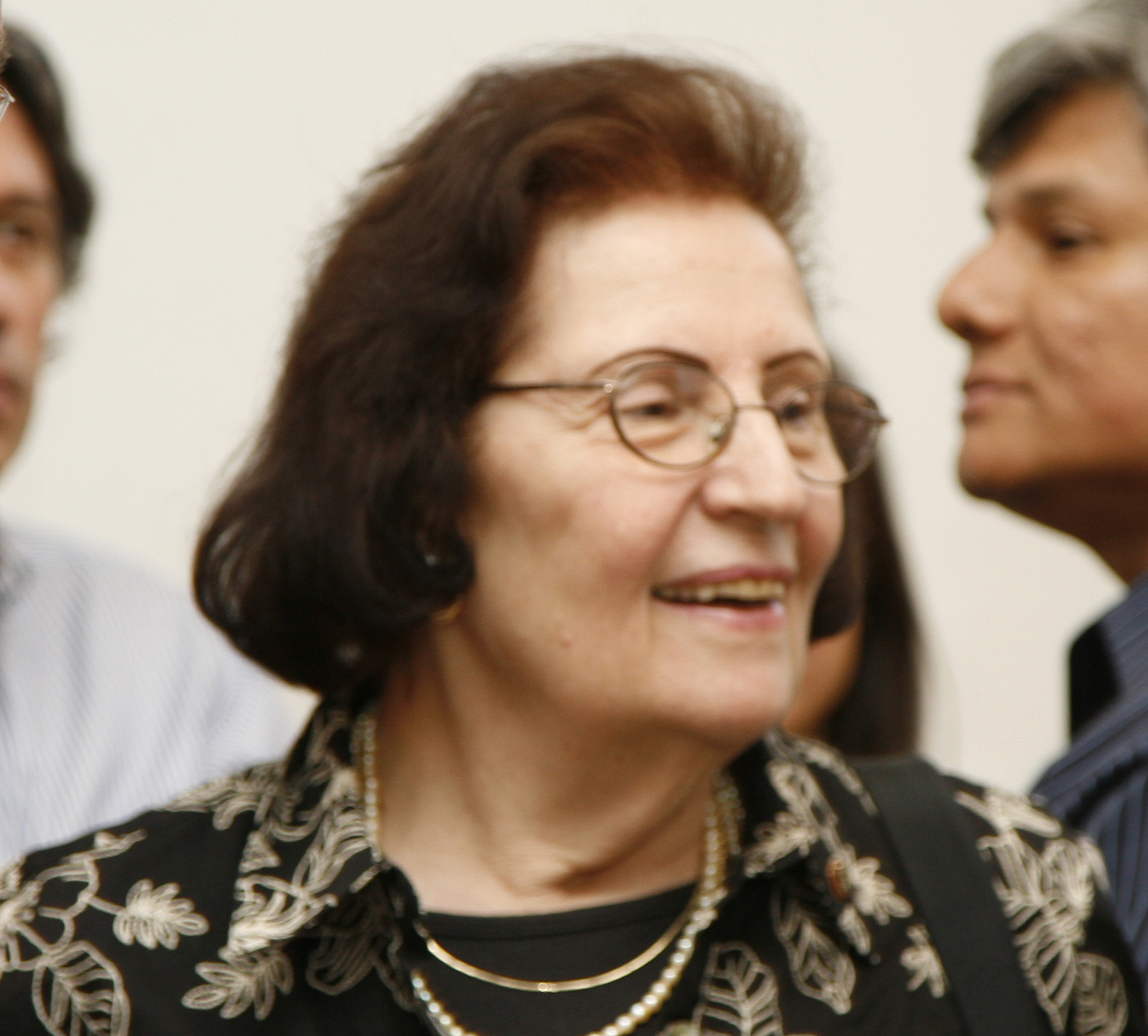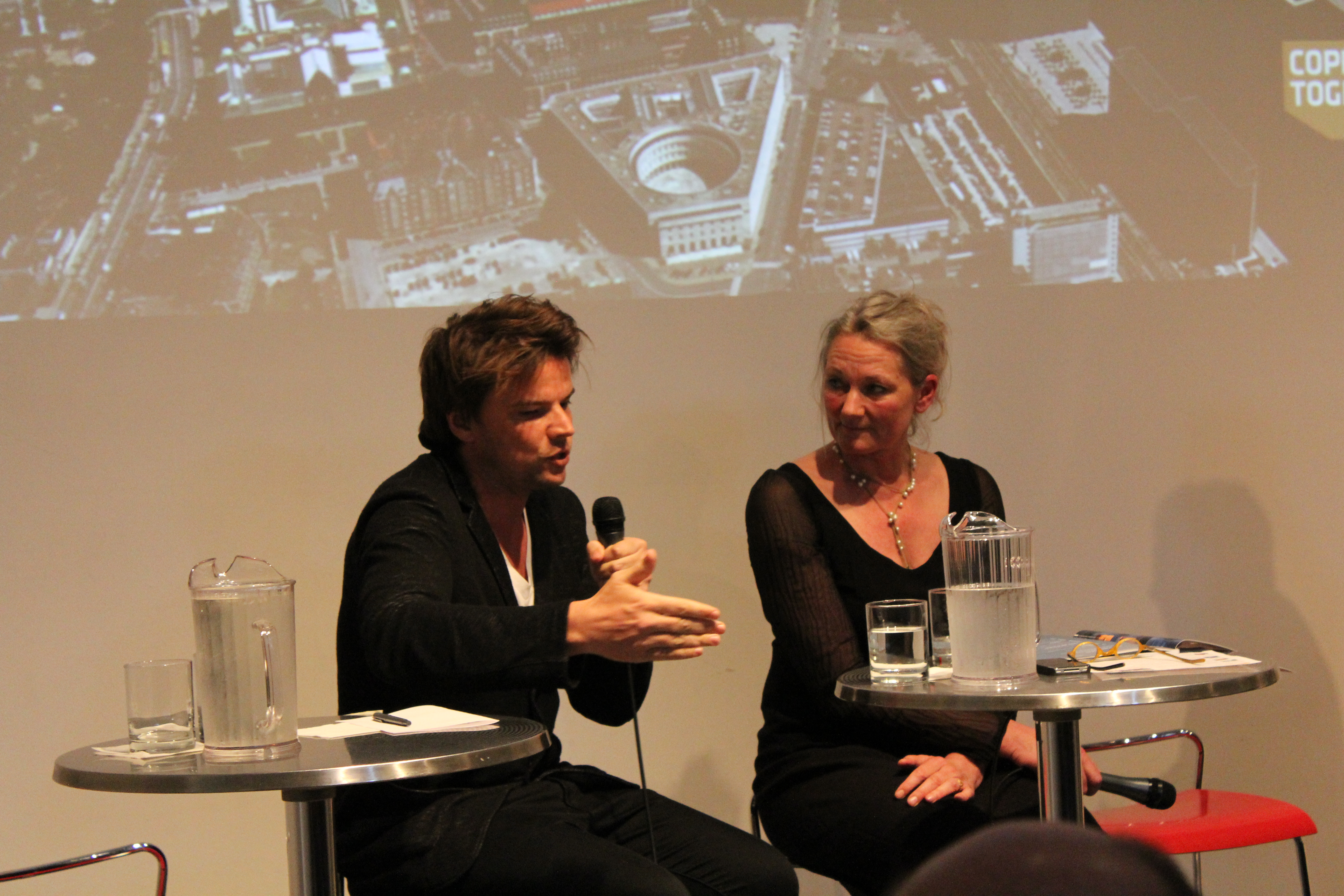Known mostly through the images like those prominently on display at the Museum of the City of New York’s (MCNY) exhibition “Palaces for the People: Guastavino and the Art of Structural Tile,” the secret hideaway of the Teenage Mutant Ninja Turtles has been glimpsed by a few curious New Yorkers looping around on the #6 train at Brooklyn Bridge Station and explored by a lucky handful of (mostly) New York Transit Museum members. On 06.05.14, presidents and members of AIA’s local New York chapters boarded an empty #6 train and toured the abandoned City Hall Station. Led by the MTA’s affable Frank Klimasz, the tour proved the aphorism “not all subway stations are created equal” correct.
When City Hall Station opened in 1904, the southern terminus of the Interborough Rapid Transit Company (IRT) was the crown jewel of the nascent system. The nontraditional curved platform is bedecked in tiled green and white archways, once-sparkling chandeliers, and intricate glass skylights that dramatically light the underground space. The plaques that commemorate the construction of the underground train system honor architects Heins & LaFarge of St. John the Divine fame, but omit Rafael Guastavino, MCNY’s unsung hero and the true mastermind behind the station’s design (and, coincidentally, the cathedral’s 12-story vaults). Walking through the station, the collective feeling was one of nostalgia: “Why don’t we have spaces like this anymore?” Continue reading “Behold City Hall Station”



